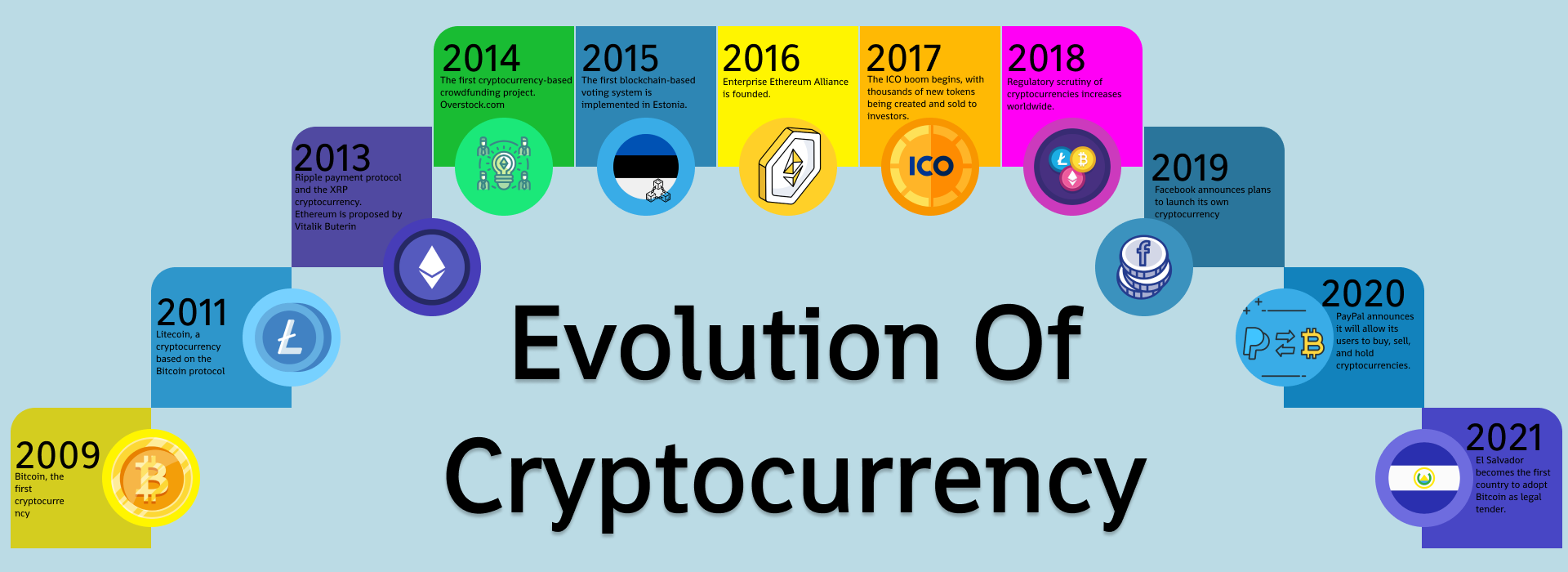The Evolution Of Crypto Coins: A Story Of Innovation And Risk
The Evolution of Crypto Coins: A Story of Innovation and Risk
Virtual currency is transforming the financial world, offering a quicker, more secure, and clearer way to transact. Envision a money that is impossible to fake and deals that occur immediately worldwide .
The Evolution of Crypto Coins: A Story of Innovation and Risk

In the midst of the digital age, the rise of cryptocurrency has been nothing short of phenomenal. The term "cryptocurrency" refers to the broad category of digital or virtual money which makes use of cryptography to secure transactions and control generating new units. A specific type of cryptocurrency is the crypto coin. Crypto coin which has seen immense growth and acceptance in recent years is the Ethereum, Stellar Lumens or any other cryptocurrency. The excitement around crypto coins like Bitcoin, Ethereum, and others has changed the way people think about money and how it is obtained in today’s digital world.
With more and more businesses opting to accept cryptocurrency as payment, the landscape for cryptocurrency-based transactions has expanded beyond just online transactions. For instance, platforms like Microsoft, Subway, and Starbucks have started accepting Bitcoin for payments, while cryptocurrency exchange giants like Binance and Coinbase are adding cryptocurrencies left and right. What does this mean for the long-term viability and momentum of the crypto coin market? In this comprehensive article, we will unravel the complex web of factors that have contributed to the meteoric rise of crypto coins, while highlighting the associated risks and challenges.
History of Crypto Coins
The journey of crypto coins can be traced back to October 31, 2008, when a person using the pseudonym Satoshi Nakamoto published a nine-page whitepaper that proposed the idea of a decentralized digital currency, Bitcoin. This revolutionary concept allowed users to send and receive value without the need for intermediaries. As the world witnessed the launch of the Bitcoin network, other cryptocurrencies began to emerge. One such significant project was the creation of the first altcoin, named Namecoin, which was developed in 2011. Ethereums next blockchain system based on its original blockchain, is still available to the blockchain network for ETH development.
The history of crypto coins is complex, and numerous projects have faced challenges and setbacks. But, this didn’t deter the community, new projects emerged and showed promise, drawing attention to the potential and possibilities available in this field. At present, hundreds of cryptocurrencies are in existence, including Bitcoin, Ethereum, Ripple, and many others. Each one is focused on a different area of innovation and aims to solve an area of concern.
Characteristics of Crypto Coins
Crypto coins function as medium of exchange, have a fixed maximum supply, are decentralized and have a specific algorithm that regulates its creation and mining.
Decentralized: Unlike traditional fiat currencies that are issued by central banks, crypto coins do not require a central governing authority to function. This ‘decentralized’ nature promotes peer-to-peer transactions directly between two parties without intermediaries.

Limited Supply: The total supply of crypto coins is often capped and as per the algorithm of each crypto coin it can be made for production at a certain interval.

Algorithmic: Mining and creations are based on a specific algorithm which makes use of complex mathematical techniques and competitions to create coins and validate transactions on a public and secure ledger known as a blockchain.
Some cryptocurrencies uses PoW (Proof of Work) protocol while some use PoS (Proof of Stake) protocol.
Pseudonymous: Cryptocurrencies operate under pseudonymous identities. Owners’ transactions can be monitored on the blockchain, but identities remain hidden.
Security: To secure transactions, cryptography is used. This generates keys, unique identifiers which ensure that transactions remain secure.

Potential of Crypto Coins
The crypto market has made significant strides in recent years. Consider the fact that cryptocurrencies have been the primary driver of technological advancements in the financial segment, particularly with regards to peer-to-peer transactions, cross-border payments, and decentralized finance (DeFi).
Fast Settlement Speed: Traditional currency transfer systems can take a couple of days for international transfers to settle. However, cryptocurrencies process transactions rapidly with an average end-to-end settlement time of about 10-15 minutes for Bitcoin and some other cryptocurrencies.
Decentralized System: All transactions on the Blockchain are decentralized, you don’t have to go through traditional banking systems to move funds at international level, leading to greater stability & less likelihood of cyber attacks.
Financial Inclusion: Central banking systems have limited outreach to rural areas and underbanked populations of countries giving no access to financial resources. Cryptocurrency allows for digital transfer within the country for certain cashless transactions as now even rural or remote villages have a limited penetration of internet means digital financial transactions.
Digital Assets as Collateral: Users can utilize their crypto assets as collateral, granting instant access to liquidity when required, instead of waiting for several days or having to part with their valuable possessions.
Challenges Associated with Crypto Coins
In spite of their advantages, the reality is that there are also a myriad of challenges associated with this fast-growing market.
Market Volatility: The crypto market has been known to be highly volatile and sensitive to external shocks, which can cause fluctuations in the price of cryptocurrency.
Security Risks: Despite an array of encryption methods protecting users’ data and transactions, there have been many reported cases of cyberattacks and scams
Regulatory Framework: Lack of clarity on regulations governing the use and purchase of cryptocurrencies may lead to further deterioration in investor confidence
Volatility in Price: There exists certain issue affecting price, since the number of users differs widely, the highest-valued use case has different requirements and more number of user needs to perform for this operation.
Mining and Validation
The mining of cryptocurrencies serves several purposes:
- Secure Transactions: Verifies the legitimacy of transactions through computer processing power.
- Ledger Block Update: Adds new transactions to the blockchain and creates a permanent record.
- Network Maintenance: Ensures the health and stability of the network by maintaining the state of the blockchain.
Mining Benefits and Risks
To secure the transaction, the cryptographic puzzle is solved while mining the block chain, the network verifies the generated block after generation and distributes to the network. the miner receives all the block reward.
However, mining comes with a lot of risks including hardware issues, environmental problems caused by mining operations, hacking tools being exposed like asic and rigs, potential hashflips
Types of Crypto Coin Mining
Crypto coins can be mined through different approaches depending on their algorithm. This includes the best-known PoW method (bitcoin) and the Proof-Of-Stake method.
Proof-of-Work (PoW): This is the most traditional mining method. Here, miners obtain Block rewards by solving complex mathematical problems based on computational power.
Proof-of-Stake (PoS)
Proof-of-stake mining is a more energy-efficient alternative. Instead of using a lot of computational power, it uses its coins or validators in charge with acquiring ‘staked coins.’
Notable Crypto Coin Mining Pools
Several pools offer resources, partnerships and hardware assistance to miners for coin extraction. The large mining pools currently operating some of the main mined cryptocurrency have the greater opportunity for successful and large mining and producing pools in most mined coins pools are Poolin, Hashflare, Antpool, F2Pool
Comparison of Mining Methods
| Proof Type | Mining Type | Algorithms | Transactions Per Day | Consensus Node |
|---|---|---|---|---|
| PoW | SHA256 | Bitcoin, Dogecoin | 3m transactions/second | Transaction Node |
| PoW | Ethash | Ethereum | 3k trades/second | Transaction Node |
| PoS | Tangle | IOTA | 1m transactions/minute | Neighbor Network Node |
Post a Comment